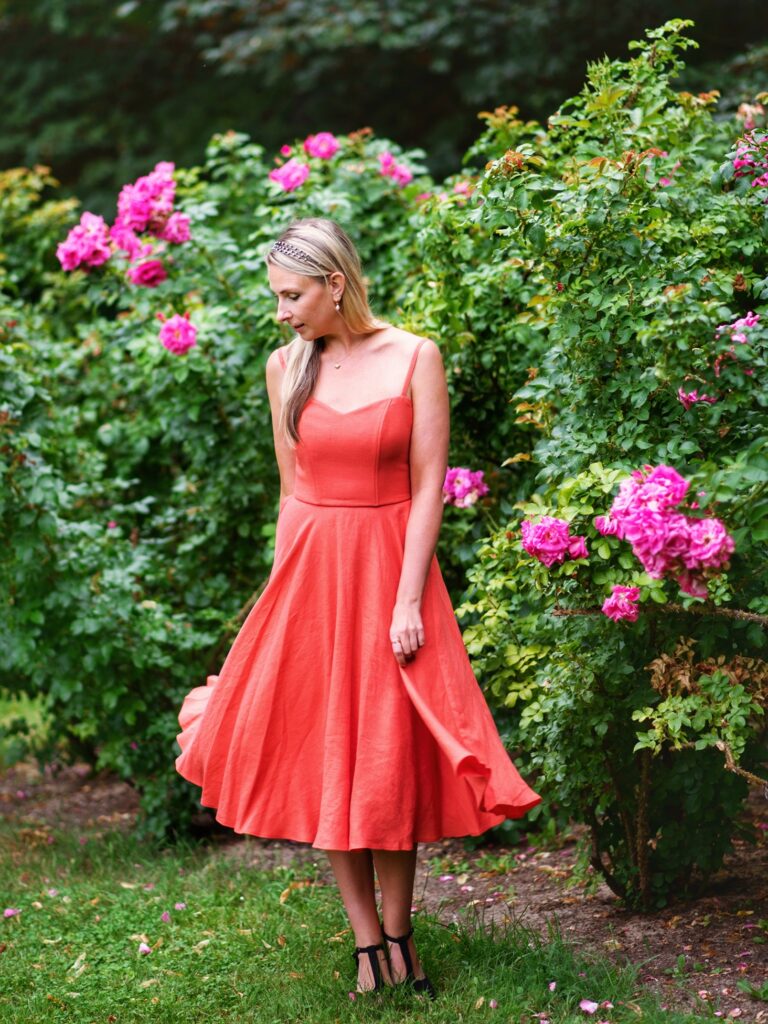With fast fashion turning into ultra fast fashion on a planet that was already drowning in disregarded polyester waste the future of fashion looks rather daunting.
We are already witnessing the damage that climate change brings with it, so to an extent it’s already too late. You can call me naive and I’ll admit to it, but I still think there is hope! We just need a pivotal shift in the fashion industry and among us consumers.
For decades, fast fashion has offered cheap, low-quality clothing in abundance. But I can sense a new trend emerging: one that prioritises quality over quantity. And that could well define the future of fashion!
Here’s the twist: that trend is not up to brands or the industry to initiate. It’s up to us, consumers! Now, I can’t expect anything to change their ways without a good reason. So, allow me to showcase why this transformation is essential and how it can also shine the light upon deeper societal changes.

The future of fashion has to look different to today simply because the planet can’t sustain our consumption anymore. About 52% of today’s clothing production uses polyester. And that’s not a very good thing for you or the planet because what is polyester?
Polyester fabric is petrol! It’s a fabric that is created from crude oil, which makes it very unhealthy, and frankly unethical, to put on your skin. Let alone on your children’s skin!
It’s also a substance that will keep on polluting the planet for long after we’re all gone. Unfortunately it’s becoming the default “fabric” which means it’ll soon be hard to find anything else.
Especially with the Chinese ultra fast fashion brands taking over the world, the toxicity of the clothes you buy online today is through the roof. But if slowly poisoning yourself isn’t incentive enough to change your ways, do consider these factors:
1.Consumers’ Responsibility in Climate Change
The fashion industry is one of the most polluting sectors globally.
- It’s in fact responsible for 10% of annual global carbon emissions
- Also a significant contributor to water pollution and textile waste
- According to a 2021 report by the Ellen MacArthur Foundation, an estimated $500 billion worth of clothing is wasted every year due to underutilisation and lack of recycling.
- The Environmental Protection Agency (EPA) states that 85% of all textiles end up in landfills annually.
Now that you’re face to face with these statistics, surely you agree that there’s an urgent need for a change in our consumption habits. Brands keep churning out multiple collections per week, because consumer demand is high. It’s up to us to shift the focus from quantity to quality. Why? Because:
- consumers can reduce waste
- support sustainable production methods
- and decrease their environmental footprint.
High-quality garments are often made with greater attention to sustainable materials and craftsmanship. That way brands can ensure longevity that cheap, mass-produced items simply cannot offer.
This isn’t just about saving the planet. It’s also about recognising our power as consumers in the future of fashion to drive change through thoughtful choices. As more brands notice the shift in our consuming habits, the more they align with sustainable values and embrace circular fashion models.
As consumers we now have a unique opportunity to literally vote with our wallets for a greener future!

2.The Boredom of Excess in Fast Fashion
At first, the accessibility of fast fashion seems thrilling. Who doesn’t enjoy a quick shopping spree to fill their wardrobe with the latest trends and low-cost items? However, the excitement fades quickly, doesn’t it?
The reality is that when anything becomes too easy, cheap, and ubiquitous, it risks losing its charm. The same applies to fashion. Too much of the good stuff – or in this case, mediocre, mass-produced clothing – can render it dull and uninspiring.
- In addition, the poor quality of fast fashion means that garments wear out quickly, leaving consumers perpetually dissatisfied.
- The endless cycle of buy-discard-repeat is exhausting and unfulfilling.
- This growing disenchantment with disposable fashion has sparked a yearning for something more meaningful: a return to craftsmanship, uniqueness, and enduring style.
High-quality fashion, by contrast, creates a deeper connection. A beautifully tailored coat or a hand-knitted jumper doesn’t just serve a functional purpose. It tells a story and reflects an investment in artistry.
Such pieces retain their allure over time, which offers the kind of satisfaction that disposable fashion simply cannot. When you fall in love with a piece of clothing you’d want to be able to wear it until the end of time, right? I sure do! So, let’s make sure that the future of fashion means the return of the artesans.
3.Shopping Smarter in the Age of AI is an Economic Reality
Even if we try avoid it, the rapid advancement of AI is transforming the global job market. Automating roles across industries will lead to widespread unemployment in certain sectors. And as more people face financial insecurity, their buying power diminishes, which forces them to reassess how and where they spend their money. This will inevitably shape the future of fashion as well.
The economic shift has significant implications for consumer behaviour. We can expect the following steps to intensify:
With less disposable income, people start to favour thoughtful, strategic purchases over impulsive spending.
High-quality clothing, despite its higher upfront cost, becomes a more attractive option due to its durability and versatility in terms of styling options.
A single well-made garment can replace several poorly made ones, making it a more cost-effective choice in the long run.
And even more interestingly, financial constraints encourage creativity. Consumers will find new ways to maximise their existing wardrobes. This can happen through mixing and matching pieces you already have, repairing old favourites, or exploring second-hand options.
Vintage and thrift shopping not only provide access to affordable, high-quality items but also tap into the growing desire for uniqueness and sustainability.
In this context, the shift towards quality over quantity isn’t just a trend – it’s a necessity. As economic pressures mount, mindless overconsumption will give way to a more intentional approach to fashion.
Simply because by prioritising quality, consumers can navigate financial challenges while still looking fabulous and being able to express themselves.
4.The Return of Creativity and Individuality
Continuing on the AI theme, as artificial intelligence becomes increasingly pervasive, as it is used to automate everything from online shopping algorithms to fashion design itself, the human desire for individuality and creativity gets stronger than ever.
Against the backdrop of AI-driven homogeneity, the future of fashion looks bright as people rediscover the joy of personal expression. This is achieved through vintage clothing, upcycling, and curating unique wardrobes from what we already own.
This new renessaince of creativity can already be seen in the popularity of thrifting, vintage shops, and even raiding parents’ or grandparents’ wardrobes for timeless gems.
These practices not only reduce waste but also celebrate fashion as a means of expressing oneself. By combining pieces from different eras and styles, individuals can create outfits that are deeply personal and reflect their identities.
Moreover, upcycling – which refers to transforming old garments into something new – has become a form of artistic rebellion against the disposable culture of fast fashion. Platforms like Depop and Vinted have surged in popularity, and they now foster entire communities that value originality over conformity.
In this new era, fashion is no longer about chasing fading trends. It’s about reclaiming ownership of our style and embracing creativity in the face of automation.
A Shift Towards Mindful Consumption
The future of fashion is about so much more more than just clothing! It’s about redefining our relationship with consumption.
By choosing quality over quantity, we take a stand against the unsustainable practices of the past and instead align ourselves with values that prioritise longevity, individuality, and environmental responsibility.
As this change in consumer habits gains momentum, it has the potential to reshape the industry as a whole. It will encourage brands to innovate sustainably and inspire consumers to embrace mindful shopping habits.
The era of cheap, disposable fashion is coming to an end. In its place, a new paradigm is emerging: one where quality, creativity, and responsibility take centre stage.
It’s time to celebrate fashion that lasts, not just in the wardrobe but in our hearts ?



